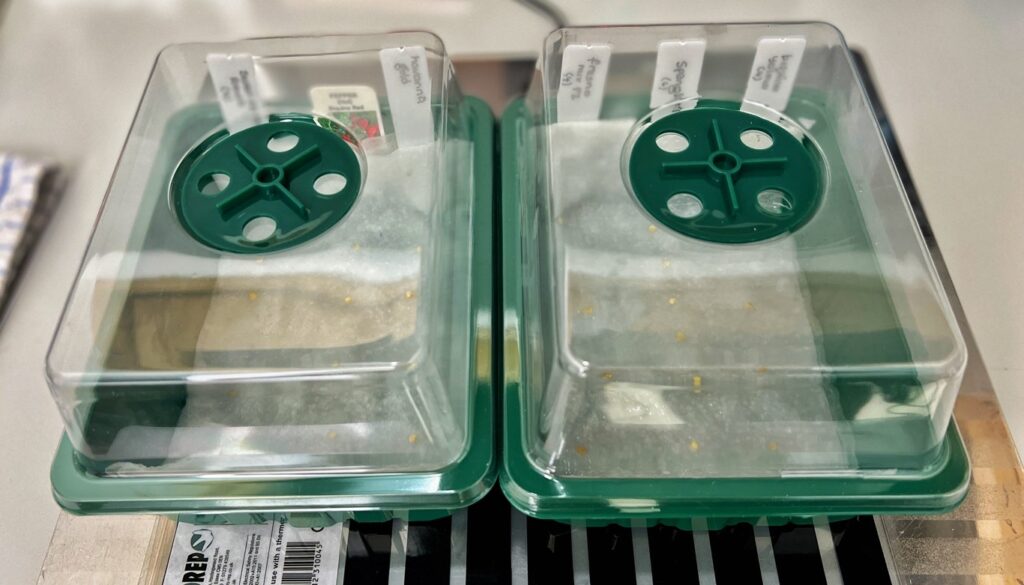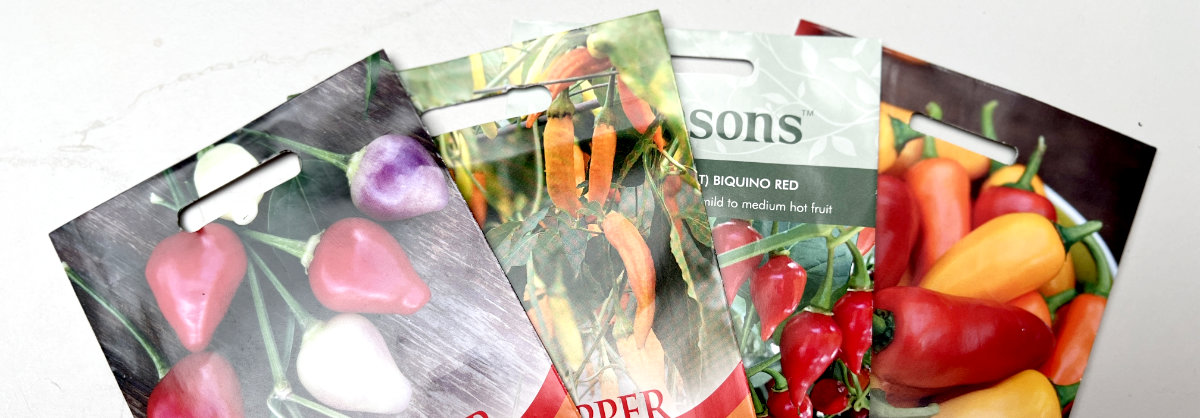I’m going to admit right at the start, it’s actually a bit late for planting chilli seeds. I should have done it at the start of the month. For one reason or another, I haven’t done it yet so I’m getting them planted now before it’s suddenly May and way too later (which is exactly what happened last year).
Because I’m starting a wee bit late and the weather is absolutely horrible at the moment here in Scotland, I’m going to be enlisting the help of a heat-mat my snake isn’t using at the moment. Our home is a bit cold for germinating chillis because we’ve had to reduce the time our radiators are on to save on fuel costs so I’m hoping this help to give the seeds a boost.
I’ve started by soaking the seeds in some very wet kitchen towels, folded in a pair of mini-propagators that I’ve placed on top of the heat mat. This should hopefully create a lovely warm moist micro-climate to fool the seeds into thinking they’re not actually starting life in a cold, damp part of the world. 🙂

I’ll be trying to grow a variety of chillis this year – some will take longer than others to sprout so I’m really hoping I haven’t left it too late!
I won’t be growing obscenely hot chillis as I’d like to introduce the fruits into our family meals. I’m aiming for between 500 and 2,500 on the Scoville scale as I’m more interested in the flavour qualities of the end product than how hot they are.
My chosen varieties
Here’s the varieties that I’ve started soaking to kick start their germination. I’ve provided links to other sites for further information (partly so I can find them again) but they are not affiliate links (as far as I know). I know I’m not making any money from them. 😅
Biquinho Red & Yellow Peppers (Capsicum chinense)
These produce tiny fruits (about the size of grape) that have a lovely flavour and light heat. Unfortunately they also grow really slowly in a Scottish climate. I’ve no idea why these are sometimes called hot chillis as they only rate 500-1,000 on the Scoville scale. There’s an article about them on The Guardian website (including a tip about pickling them).
Fresno Mix F1 Hybrid (Capsicum Annum)
This variety produces fruit about 7cms long with a medium heat (a bit hotter than Jalapeños – 2,500 to 10,000 on the Scoville scale). I’m using Thompson & Morgan seeds. The packet says the plants will produce mixed coloured fruits (yellow, red, and orange). More information is available on the Thomson & Morgan website.
Havanna Gold (Capsicum Annum)
This plant apparently produces an abundant crop of mild orange/yellow peppers. Should be interesting in salads as they’re only 500-2,000 on the Scoville scale. More information is available on the Thomson & Morgan website.
Spangles (Capsicum baccatum)
This is an ornamental edible of Brazilian origin that produces lots of fruity little peppers in different colours on the same plant ranging from light purple to bright red as the fruits ripen (500 – 1,000 on the Scoville scale). I’m looking forward to seeing this one when it’s covered in fruit! More information is available on the Thompson & Morgan website.
Sweet Peppers (Capsicum Annum – “Rewia”)
This is a variety of bell pepper that produces large, juicy orange peppers, if things go well. It’s apparently well suited to the cooler climate of the UK so I’m hoping for a good crop. More information is available on Premier Seeds Direct (no, I’m not an affiliate. ^_^)
As it takes up to four weeks for some chilli varieties to sprout, it will be interesting to see how they do – I’ll be posting updates on my blog as they progress.

Leave a Reply